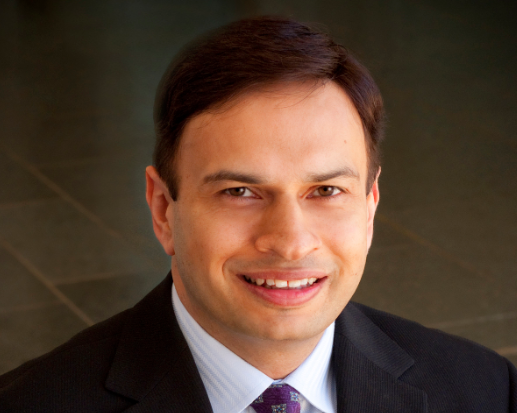You’ve seen rapid growth during an economic downturn over the last five years or so. How did you do it?
One of the secrets is building strong client relationships and being able to go towards what we call the dual mandate to help them run better and different. What we mean by that is helping them to look at cost efficiency and productivity to really help them with their new agenda. In terms of the social, mobile, analytics and cloud (SMAC), and all the digital transformation that we’re dealing in, we’ve been able to make our investments in helping our clients work both sides of that spectrum. I think that’s helped us to continue driving our growth, and we’re really excited now that we’ve started to see a lot of the investments that we’ve made in other businesses and geographies – some of our offerings in our BPO (business process outsourcing) infrastructure, our consulting and even our SMAC business – really gain some critical maturity in terms of scale and size. So even though Cognizant is reaching that $10-billion-plus mark, we have all of these new businesses that are reaching that $1 billion mark, and we think that they all can become very sizeable businesses for us in the future as well.
How are each of those three areas performing individually?
SMAC last year gave us about $500 million of revenue. We haven’t guided in terms of how much it’s going to do this year, but it is definitely continuing to grow very nicely for us. The H2 (‘Horizon 2’) service offerings – the BPO, ITS (IT infrastructure services) and consulting – continue to drive faster growth than the rest of the company, so given the maturity of those businesses in the industry, we see huge opportunities to continue growth in that area. And I don’t want anyone to think that the H1 (‘Horizon 1’ – application development and maintenance) side of business is not going well – it’s on a healthy growth. We saw some significant wins in Q1 and that’s why we’re optimistic on the full-year picture for this year because of those wins in the outsourcing space at the beginning of this year.
>See also: Infor a treat: In the boardroom with Duncan Angove
If you were to break down SMAC, which individual technologies have you seen gain more traction and interest?
We’ve seen very healthy traction along all of those dimensions. There is a lot of consulting engagements that we’re driving in terms of having our clients think about how they can leverage social media platforms and analytics. I wouldn’t say that those are driving huge multi-million-dollar opportunities downstream yet, but they are in the very early stages. Around mobility, just about every single one of our top 25 clients have initiatives going on. I think those projects will continue to become quite significant as they become much more enterprise-related engagements. Around the cloud, we have a little over 150 clients using 18 platforms. All of these are kicking in with our clients, so we’re seeing good, healthy traction along all of those dimensions. Revenue for SMAC projects last year was at $500 million dollars, but we feel very good that all four of those technologies will each become $1 billion solutions over time.
The role of IT is changing because of the transition to delivering IT as a service. Have you noticed this shift in your interaction with customers?
We’re seeing a shift in the amount of customers wanting to talk about newer initiatives. I think with all of the changes that are happening around technology, we’re at a very pivotal time. Our consulting capabilities are really resonating with our clients in terms of helping them think about the future. In the past, many of the discussions with the CIOs were about managing costs and driving productivity and efficiency – those still happen today, but generally more CIOs now want to talk about their new agenda. So that’s really encouraging for us because I think we’re really able to help our CIOs continue to free up dollars to invest in that new agenda.
>Have you also noticed a transition in boardroom input – is there more senior management involvement in projects?
Definitely. I can tell you that, from the boardroom to the CEO, technology has become front-and-centre on the agenda. Even for us, the number of CEO meetings and board meetings that are happening now around presenting where we think we are headed in terms of what we call the future of work and ‘code halo’, and our point of view on SMAC, has really increased. That has also gotten front-and-centre with many of the boardrooms and CEOs of the companies we’re working with.
>See also: The Silicon dream: Mike Olson tells the story of Cloudera
Where do you see the industry going in the next couple of years?
It’s amazing how fast things are moving, especially around the areas of SMAC. I think you’re going to see – at least from the Cognizant side – the convergence of IT and operations, and ability to deliver that over a cloud solution. It’s going to really change in terms of just how development is done today. You’re going to see much more of these specific solution offerings, almost as a paid-for service for our clients. I think that’s going to fundamentally change a lot of the interaction that we’re having with our clients and how we deliver to them over the next few years.







